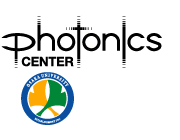【研究成果】2013年
研究成果66
Dynamic Visualization of RANKL and Th17-mediated Control of Osteoclast Function
Junichi Kikuta, Yoh Wada, Toshiyuki Kowada, Ge-Hong Sun-Wada, Issei Nishiyama, Shin Mizukami, Nobuhiko Maiya, Hisataka, Yasuda, Atsushi Kumanogoh, Kazuya Kikuchi, Ronald Germain, Masaru Ishii
J. Clin. Invest., 123, 866-873 (2013)
Osteoclasts are bone resorbing, multinucleate cells that differentiate from mononuclear macrophage/monocyte-lineage hematopoietic precursor cells (:Large multinucleated cell responsible for the dissolution and absorption of bone 破骨細胞). Although previous studies have revealed important molecular signals, how the bone resorptive functions of such cells are controlled in vivo remains less well characterized. Here, we visualized fluorescently labeled mature osteoclasts in intact mouse bone tissues using intravital multiphoton microscopy. Within this mature population, we observed cells with distinct motility behaviors and function, with the relative proportion of static – bone resorptive (R) to moving – nonresorptive (N) varying in accordance with the pathophysiological conditions of the bone. We also found that rapid application of the osteoclast-activation factor RANKL converted many N osteoclasts to R, suggesting a novel point of action in RANKL-mediated control of mature osteoclast function. Furthermore, we showed that Th17 cells, a subset of RANKL-expressing CD4+ T cells, could induce rapid N-to-R conversion of mature osteoclasts via cell-cell contact. These findings provide new insights into the activities of mature osteoclasts in situ and identify actions of RANKL-expressing Th17 cells in inflammatory bone destruction.

The interaction between Th17 and osteoclast depends on RANKL expressed on Th17. (A) Intravital multiphoton imaging (low-power view) of osteoclasts (green) in mouse bone tissues of a3-GFP mice after administration of in vitro–differentiated Th1 (labeled with CMF2HC — blue) and Th17 (labeled with CMTPX — red) (Supplemental Video 7). Cell borders are marked by white lines. Scale bar: 40 μm. (B) The migratory behaviors of Th1 and Th17. Blue and red spheres represent Th1 and Th17 cells, respectively, and white lines show the associated trajectories. Scale bar: 40 μm. (C) Summary of mean tracking velocities of Th1 and Th17 cells. Data points (n = 10 for Th1, and n = 48 for Th17) represent individual cells compiled from 3 independent experiments. (D) The number of Th1 or Th17 cells attached to mature osteoclasts for more than 5 minutes (n = 4, from 3 independent experiments). (E) Summary of mean tracking velocity of Th17 cells treated with isotype control antibody or anti-RANKL antibody. Data points (n = 32 for Th17 cells treated with isotype control antibody and n = 30 for Th17 cells treated with anti-RANKL antibody) represent individual cells compiled from 3 independent experiments. (F) The number of Th17 cells treated with isotype control antibody or anti-RANKL antibody attached to mature osteoclasts for more than 5 minutes (n = 5, from 3 independent experiments).



